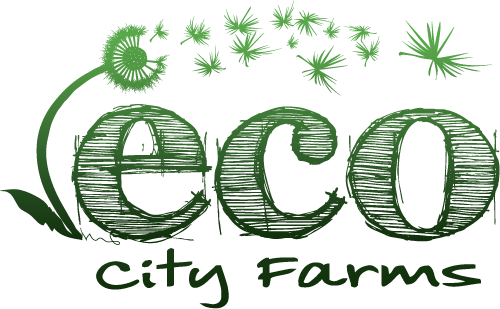Spring Farming
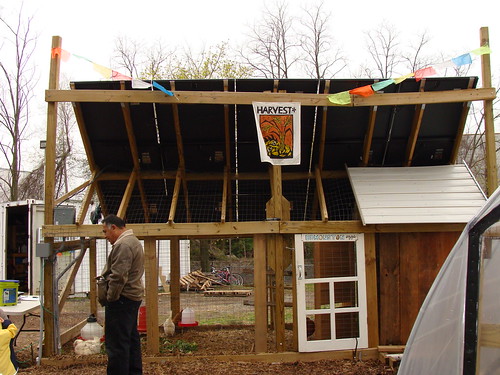
Harvest!
We’ve been transitioning into spring this month: opening up the hoophouses, removing insulation, moving the compost piles and other heat inducers out of the hoophouses, and seeding, seeding, seeding.

Inside the hoophouses volunteers have been thinning plants to allow more space for them to grow, as well as pulling out plants that were injured during the extreme temperature changes of March, and planting new seedlings.
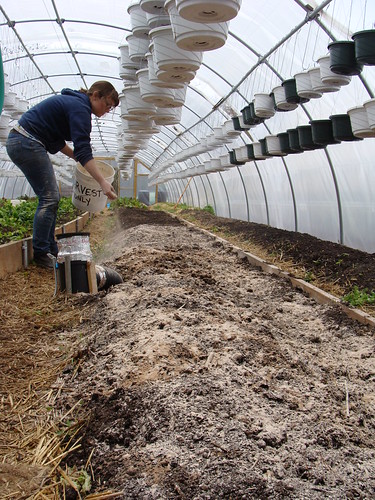
Here is Emma, farm intern, adding azomite (a mineral from volcanic ash and natural fertilizer) to the soil.
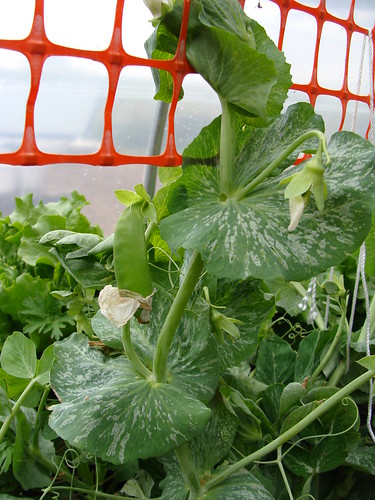
The peas are starting to grow up the netting system we’re trying out.
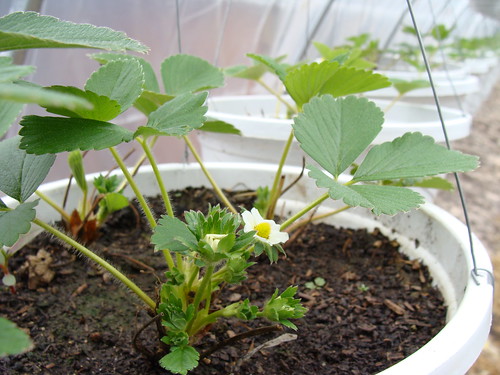
We’ve planted strawberries in some of our hanging pots.
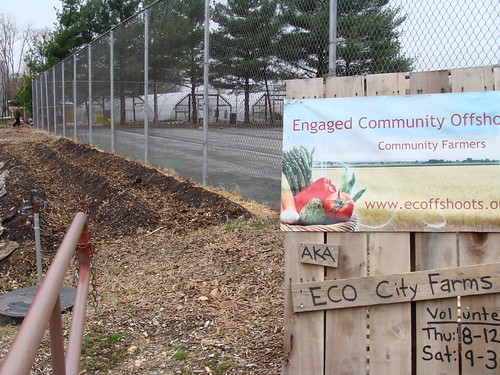
We’ve also planted asparagus on the beds near the tennis court. Stay tuned for these yummy veggies next year! Asparagus does not need to be replanted, as it is a perennial plant (i.e. a plant that lives for more than two years) that grows from the same root system every year. A productive bed of asparagus can keep producing for up to 15 years.

Now that it’s warm, the bees are out of hibernation and busy again collecting nectar from the spring flowers!
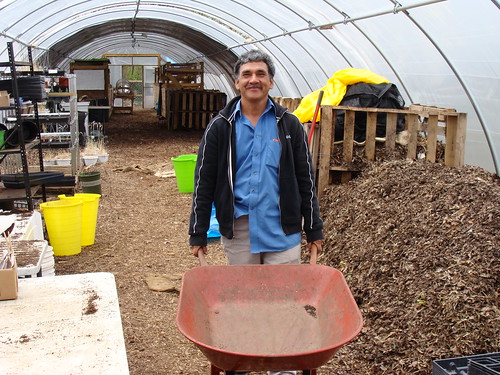
Our rising urban farmer Noel working in hoophouse #4!

Here is a view of part of the seedling operation in hoophouse #4. An equal amount has been seeded in an adjacent area of the hoophouse.

We are moving towards the new passive aeration composting system. The large piles of compost have pipes along the bottom, which draw in air because of the heat of the decomposing organic materials. The hot zone on the top of the pile pulls in oxygen from the bottom, while the green cloth keeps the moisture and heat in. This system is not only less labor-intensive for us (since we don’t need to turn the compost anymore), but it is also more efficient and quicker. Eventually, we will install a fan that will force air through the pipes into the piles for 15 minutes a few times a day, which will speed up the decomposition process even more.

As part of the new less labour-intensive composting system, we now have compost drop-off bins, where everything from the hoophouses (from weeding) ends up. This is then transfered to large compost piles, like the one under the green cloth in the background.
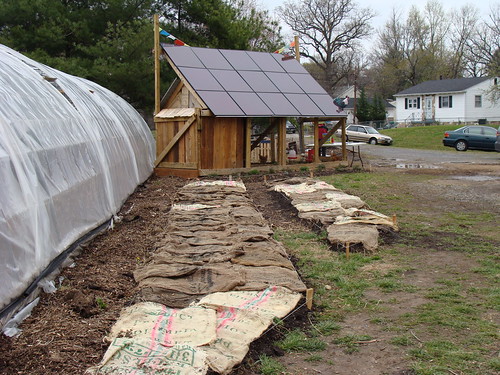
These new beds outside the hoophouses are here to nourish the soil. The “green manure mix” adds nitrogen and other nutrients that are later tilled into the soil, instead of harvested.

Adam Schwartz, our farm builder, is demonstrating the new compost tea system. The previous system had a problem with stability when the bubble infuser was on.

The new compost “tea bag” is more efficient than the previous cloth tea bag we were using.

Last Saturday, the University of Maryland Environment, Technology and Economy Scholars group came to volunteer at the farm. Here are two of the Scholars operating the vermiculture (worm compost) sifter.
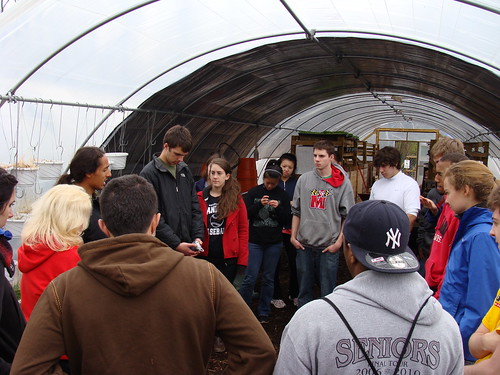
Christian Melendez (on the left, by the hanging pots) giving the UMD Scholars group some closing words about urban farming.
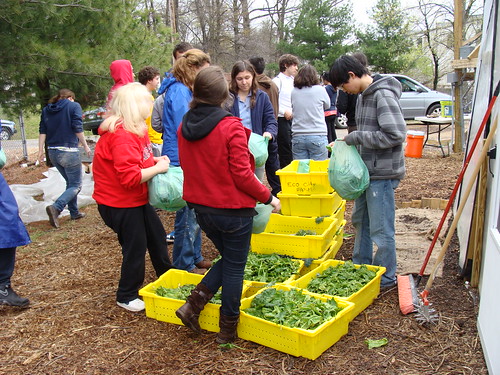
The students were excited to take home some of the harvest (kale, collard and other greens)!

One of our smallest farmers socializing with the chickens. Come out and enjoy the company with us!
Peace and Carrots,
Natalya and the ECOcrew
